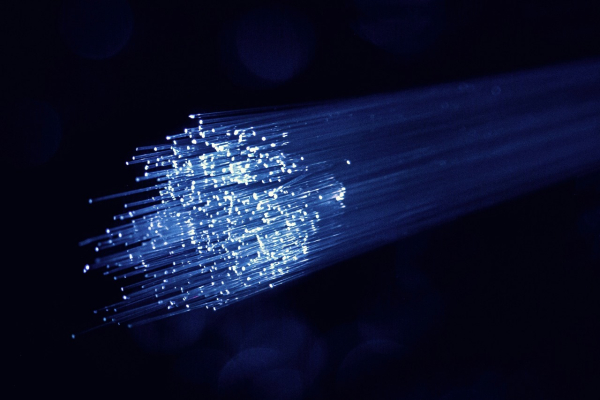The Role of Dark Fiber in Modern Data Center Infrastructure
- Blogs Thursday, 06 June 2024 09:36 • 5 minutes

Organizations have sought dark fibers to enhance their network capabilities with the world demanding high connectivity.
This concept for several years back has been helping lines of communication, serving as a key enabler for high-performance, scalable, and secure connectivity.
Data centers have used dark fibers to help meet clients’ demands for the past several years. It has become the highway for data to transfer to multiple networks faster from one point to another.
What is Dark Fiber?
Dark fiber refers to unused fiber-optic cables laid during the initial infrastructure expansion
These physical cables are latent resources awaiting deployment for high-capacity communication networks. The term "dark" indicates the absence of data signals or light in the fiber. They are not usually currently active on transmitting data but they are installed and on standby, ready to use.
The Relationship Between Dark Fiber and Data Centers
The rapid expansion of digital services has created an overwhelming need for high connectivity with reliable infrastructure. Dark fiber and advanced facilities, such as data center Tier 4, offer a transformative solution.
A Tier 4 data center, especially if it’s certified by Uptime Institute, has the highest level of reliability and performance, providing redundancy, and fault tolerance.
Integrating dark fiber with these data centers creates a high-performance infrastructure that can handle enormous data loads with incredible speed, scalability, and security.
With all that is mentioned above, the combination of tier 4 data centers and dark fibers can meet the demands of today’s needs for high connectivity and resilient infrastructure.
Read Also : What to consider when choosing Data Center
How does Dark Fiber Work?
Dark fibers are installed from one place to another at both ends, creating a physical network. When activated, they convert data into light signals, send the light through the cable, and convert it back into data at the receiving end. These companies are called Internet Service Providers (ISPs).
Dark fiber offers high flexibility and scalability, enabling companies to personalize their network infrastructure.
Businesses can maximize network performance and adapt bandwidth to meet increasing demands by using their own equipment to light the fiber. With reliance on shared networks, this method improves security and lowers latency.
How Does Dark Fiber Work for Data Centers?
There’s a relationship between Dark fiber and data centers.
Dark fiber enables data centers to maintain seamless, high-capacity connectivity while providing organizations with the scalability and security required to support their growing digital ecosystems.
For the reasons described above, data centers provide dark fiber with redundant routes for their clients, offering numerous advantages through their diverse physical networks.
High-Speed Connectivity
Dark fiber provides unmatched speeds, which is essential for handling the enormous data loads processed in data centers. Its low latency ensures efficient communication between data centers and endpoints.
Thus, businesses will gain efficient communication and connectivity, especially when data exchanges are required in urban environments.
In Indonesia, the association APJII (Asosiasi Penyelenggara Jasa Internet Indonesia) represents ISPs and other internet-related businesses. It facilitates interconnection between ISPs to enhance network distribution and connectivity across the country, giving better access to users. APJII operates two key site locations in Jakarta: in Cyber 1 and another in BDDC's JST1 namely IIX-JK2. These locations strengthen the data center's network connectivity, ensuring robust and efficient interconnection.
What Business Types Can Use Dark Fiber Data Centers?
A wide variety of industries can use dark fibers. It all boils down to whether they need secure, high-speed, and scalable network solutions. Dark fiber data centers are emerging as game-changers, offering unparalleled performance and control.
However, some examples of industries that usually install dark fibers for smoother business operations include:
- Technology Companies:
For big data, AI, and IoT applications. - Finance and Banking:
To ensure secure, real-time transactions. - Media and Entertainment:
For streaming, rendering, and editing large files. - E-Commerce:
To manage high-volume traffic and transaction data.
BDDC for Your Data Center Solutions
At BDDC, we specialize in providing cutting-edge solutions, including dark fiber networks and state-of-the-art data centers with Uptime certifications in Tier III and Tier IV.
With a large ecosystem of networks via connectivity partners and APJII's site now located at JST1, BDDC offers unparalleled connectivity and robust infrastructure. Our services are tailored to meet the unique needs of modern businesses, ensuring security, speed, and scalability. Contact us today to discover how BDDC can transform your data infrastructure!
